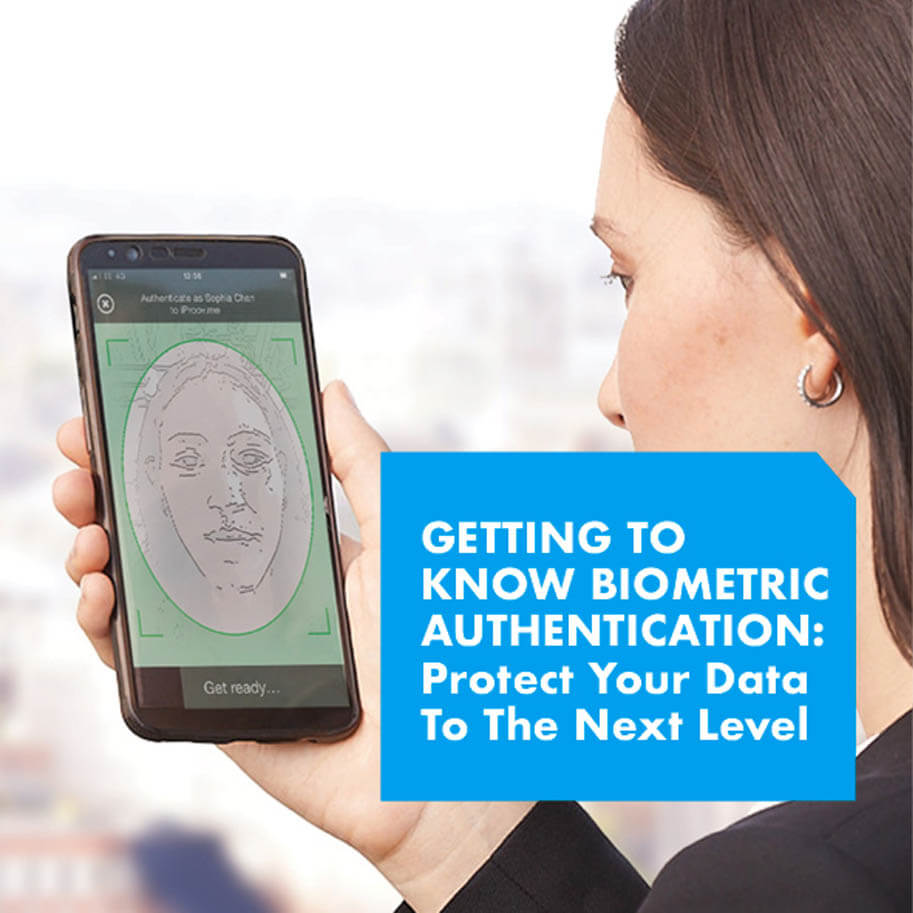
Getting To Know Biometric Authentication: Protect Your Data to the Next Level
A password alone may not be enough to keep all our personal information completely secure. Nowadays we use fingerprint, facial recognition, a retina scan, or some other physical characteristic to protect our data. Well that’s actually called, biometrics—a new way of verifying our identity that uses physical and behavioral traits, not easily hackable passwords.
What is biometrics?
Biometric authentication involves using some part of your physical makeup to authenticate you. Biometric authorization uses things like fingerprints, facial recognition or voice recognition to verify your identity. This technology is used in highly secure facilities and, recently, has become more a part of our lives via the laptops and smartphones we use every day.
Biometric authentication is performed by doing a comparison of the physical aspect you present for authentication against a copy that has been stored. For example, you would place your finger on a fingerprint reader for comparison against the stored sample. If your fingerprint matches the stored sample, then the authentication is considered to be successful.
The most popular types of biometrics devices are the following:
- Fingerprint scanners: These are widely available for both desktop and portable computers from a variety of vendors, connecting via a USB or Personal Computer Memory Card International Association (PCMCIA, or PC Card) interface.
- Facial pattern recognition devices: These devices use facial geometry analysis to verify identity.
- Hand geometry recognition devices: These are similar to facial pattern devices but analyze hand geometry.
- Iris scan identification devices: Iris scanners analyze the trabecular meshwork tissue in the iris, which is permanently formed during the eighth month of human gestation.
- Retinal scan identification devices: Retina scanners analyze the patterns of blood vessels on the retina.
Biometric authentication is being used in a wide variety of applications across many industries. Such as travel and hospitality, banking and financial services and healthcare services. And so, the development possibilities of biometric authentication and identification are far from being exhausted. As biometrics research continues, the expert in this industry is needed and having a career in the Information and Technology industry is in high demand.
Are you intersed to have career in Information and Technology industry? Start your career now with Swiss German University. If you study IT at SGU, you can get a new curriculum offered in 2020 with our two new concentrations: AI and Data Scientist and IT Entrepreneur. Students who study IT at SGU will also be prepared to take a professional certification of their choice. This certification would expand their knowledge and allow a smoother entrance to the job market. In the future, graduates with an IT Bachelor’s degree may enjoy excellent, diverse, and global employment opportunities. In the technopreneur space, not an invention but innovation is the key to achieving success.
Download our curriculum by clicking the button at the end of this article.
Tentang SGU
SWISS GERMAN UNIVERSITY (SGU) is an international university in Indonesia, was established in 2000 as a joint effort between Indonesia, Germany, Switzerland, and Austria. We are the pioneer in offering international curricula in Indonesia. Qualified students can graduate with a Double Degree from Indonesia and Germany, which SGU provides in cooperation with partner universities; surely a valuable tool for your future careers. Ever since its establishment, SGU has been dedicated to delivering quality education in line with international standards and aims to develop skilled professionals who meet the demands of the industry. In order to achieve its objectives, SGU offers quality-oriented learning through 12 Bachelor’s Degree Programs and 4 Master’s Degree Programs ranging from Engineering, Information Technology, and Business to Life Sciences and Social Sciences. Furthermore, with small class sizes, and with English as the medium of instruction, you can look forward to pursuing your tertiary education and degree with full confidence.
Curriculum Back